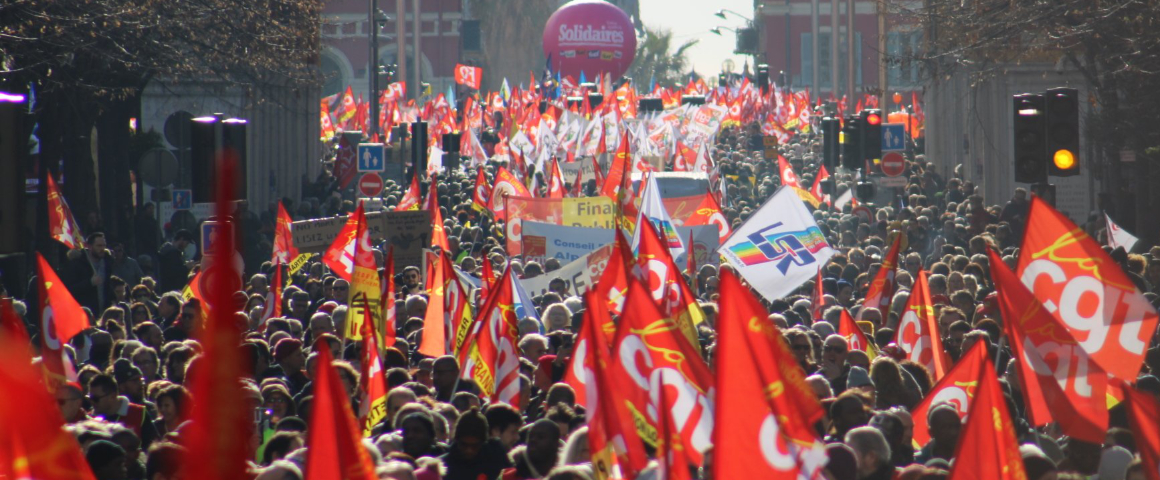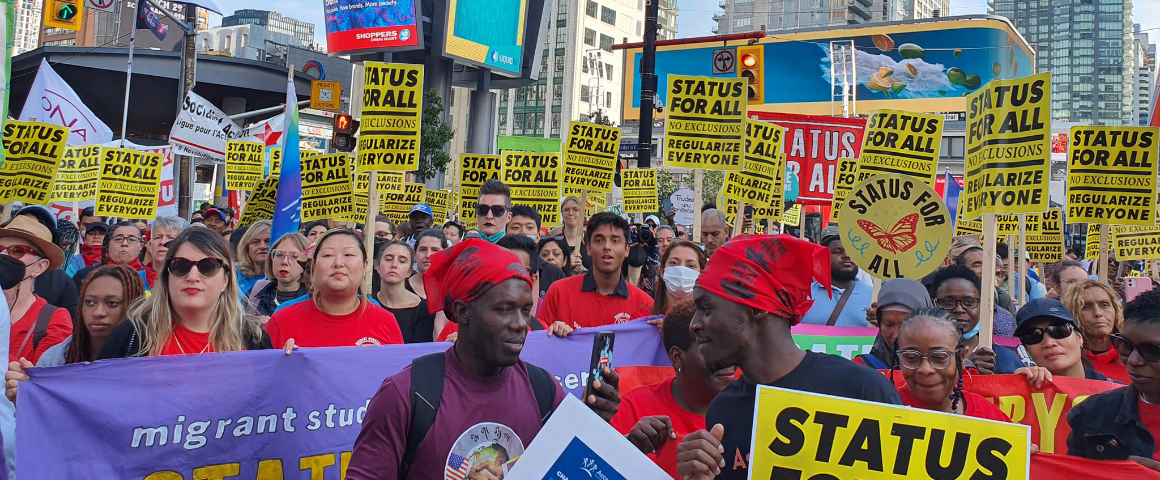PV Labour Bureau
In June 2001, a group of trade union leaders from the US visited South Africa for a focused exchange which examined issues confronting each of their movements. At one point, while discussing political action, one of the US labour leaders remarked that the role of the union in political action was to represent the interests of its members. The South Africans politely disagreed: “Comrades, the role of the union is to represent the interests of the working class. There are times when the interests of the working class conflict with the interests of the members of our respective unions.”
The point here is not to skewer the US labour leaders – by all accounts, they were progressive political activists, and their view that the union needs to represent the interests of its members is not incorrect.
Rather, the point is to highlight a vision of trade unionism which is all too frequently absent from the labour movement in the US and Canada. That is a vision of what is sometimes called “class-oriented social unionism” – of the union actively representing broader working-class interests which may go beyond those of their specific members and workplaces.
Right now, workers in Canada are getting a good look at this vision through the pension reform strikes that have rocked France since mid-January, mobilizing 2 million people into the streets and bringing the country to a standstill on January 19.
These actions are in response to government proposals increase the retirement age for a full state pension from 62 years to 64 and to lengthen the overall contribution period to 43 years. The government claims this reform is necessary to ensure the pension system is funded, estimating that the 2-year extension will provide an additional $19 billion annually. The proposals are a reintroduction of similar ones that were pushed back in 2020 and they remain enormously unpopular among the French people, with two-thirds opposed.
That the public is against the reform is not surprising; neither is the fact that people are demonstrating. Similar attacks here in Canada would elicit similar responses. What is notable in France, though, is how that opposition has been built into mass social protest including strike action. This is not the result of some spontaneous eruption of political consciousness – it is the product of class-oriented social unionism.
Leading the charge is the Confédération générale du travail (CGT), France’s most militant and politically progressive trade union central. When the government first introduced the pension reforms at the end of 2019, the CGT responded before they were even formally announced, with strikes and protests which quickly grew to involve about 1.5 million people across the country. Notably, the number of people involved in the struggle was more than double the union’s entire membership of about 640,000.
The CGT’s initiative was crucial, since the country’s largest labour central, the more conservative Confédération française démocratique du travail (CFDT), declined to act. The CFDT initially took a conciliatory approach to the reforms and had been in negotiations with the government on them. It only joined the protests after nearly two weeks of CGT-led strikes had shut down France’s transportation infrastructure.
When the government was forced to delay its proposed reform until December 2022 (and subsequently to January 2023), the CGT spent the time continuing to build the base for mass social protest. While the CFDT remained open to negotiating with the government and calling for maintenance of the status quo (retirement at age 62), the CGT has worked to rally people to an alternative proposal for pension reform. That proposal would allow for full retirement at age 60 and be paid for by cutting off public subsidies to corporations, raising wages for all workers, eliminating the 28 percent gender wage gap, closing corporate tax loopholes and increasing overall employment through a shorter work week. One union’s approach takes care of the interests of its members; the other union’s approach does the same but develops that into taking care of the interests of the whole working class.
The CGT’s efforts appear to have paid off in 2023, with increased public opposition to the government’s proposals, even larger strikes than in 2020 and the involvement of the CFDT from the beginning. Some observers have already suggested that the current mobilizations have the capacity to bring down the government.
Workers and unions in Canada have expressed solidarity with the pension reform strikes in France. But solidarity involves more than expressions of support – it also involves learning from the experiences of other people’s struggles and applying that insight to step up the class struggle here.
The class-oriented social unionism of the CGT in France demonstrates the importance of moving (or developing) workers’ struggle from the point of production to the point of consumption – from fighting at the “shop floor” level to engaging in political struggle at the country-wide and even international level.
Doing this means immersing the union in large-scale issues like global political economy, international trade and finance deals, militarism, climate change and environmental degradation. It means helping working people to understand how they fit into this larger picture and how it affects them in their workplace and community. This involves more than simply having union leaderships fund and support social movements. During the anti-globalization struggles of the late 90s and early 2000s, unions in Canada helped fund coalitions and campaigns, and union leaders regularly showed up and spoke at demonstrations. But, millions of grassroots union members were often left unaware of their own union’s analysis about globalization and why it mattered to the working class. The same is often true now with key issues such as climate and environmental justice, militarism and war, and racial and gender equality.
Class-oriented social unionism requires a leadership that is responsible to the membership – accountable, responsive, engaged – and a membership that is united with a fighting leadership.
France has a very low rate of unionization, and the total membership of the various union centrals is about 2.4 million workers. So, 2 million protesters represent around 80 percent of total trade union membership. By comparison, if the labour movement in Canada were able to mobilize a similar proportion of its total membership (about 4 million) 3.2 million would hit the streets. Of course, these aren’t just union members in the streets of France – but that’s precisely the point. Class-oriented social unionism mobilizes the entire working class, not just union members, on issues that affect the entire class.
Why is this so important?
For the working class to wage a fight against capital and ultimately win political power, it needs an independent working-class ideology. This is especially important in the current conditions, in which the economic base for reformism and opportunism inside the labour movement is diminishing.
For many decades, exploitation of colonial and semi-colonial peoples allowed capitalists in the exploiting countries share a small portion of their super-profits with a section of the workers, in the form of higher wages. This formed a basis for class collaboration and the resulting penetration of capitalist ideas into the labour movement. Inasmuch as the Canadian monopolists shared in colonial super-profits, this process has had its effects on the Canadian labour movement.
However, as the class contradictions within capitalism have sharpened, workers have faced increasing pressure from the bosses and their governments, who are less willing to share their more limited spoils and are demanding more concessions and more wealth from the working class.
These increased attacks typically generate increased labour militancy, but this doesn’t translate directly or immediately into increased class and political consciousness. That develops from outside of workers’ experience in the workplace, as socialist theory is welded onto their struggles, and they are drawn to the political level. In the process, the illusions fostered by reformism and opportunism come into conflict with an intensifying struggle, and are replaced with class consciousness.
So, the view that the state is neutral authority, standing above all, is replaced by an understanding of the state’s class nature and role in capitalist society. Reliance upon narrow electoralism is replaced by mass extra-parliamentary struggle that seeks to build a parliamentary reflection. Reformist campaigns, which fight for limited and partial gains, are replaced by campaigns for concrete and far-reaching reforms which build working-class confidence and experience, strengthen unity and organization, deepen class consciousness and shift the balance of class forces. Class collaboration is replaced by class struggle.
Workers in Canada can strengthen the labour movement by organizing around the kind of class-oriented social unionism we see in the CGT in France. Drawing upon their own long collective of class struggle here, they can press their unions to mobilize and lead independent working-class political campaigns. They can build local labour-community resistance committees and left caucuses in their unions and labour councils, as the basis for representing and fighting for the interests of the entire working class.
Get People’s Voice delivered to your door or inbox!
If you found this article useful, please consider subscribing to People’s Voice.
We are 100% reader-supported, with no corporate or government funding.




